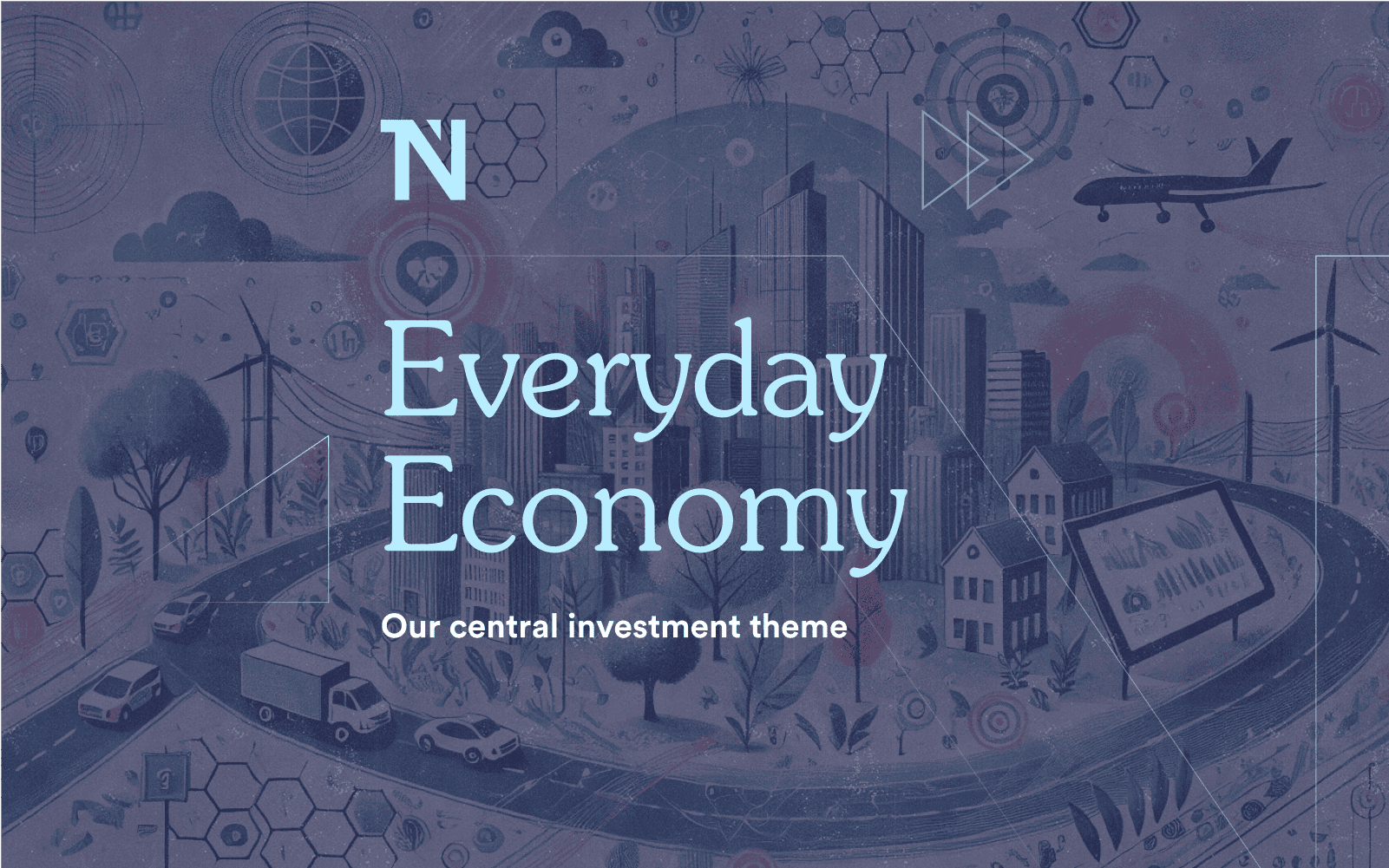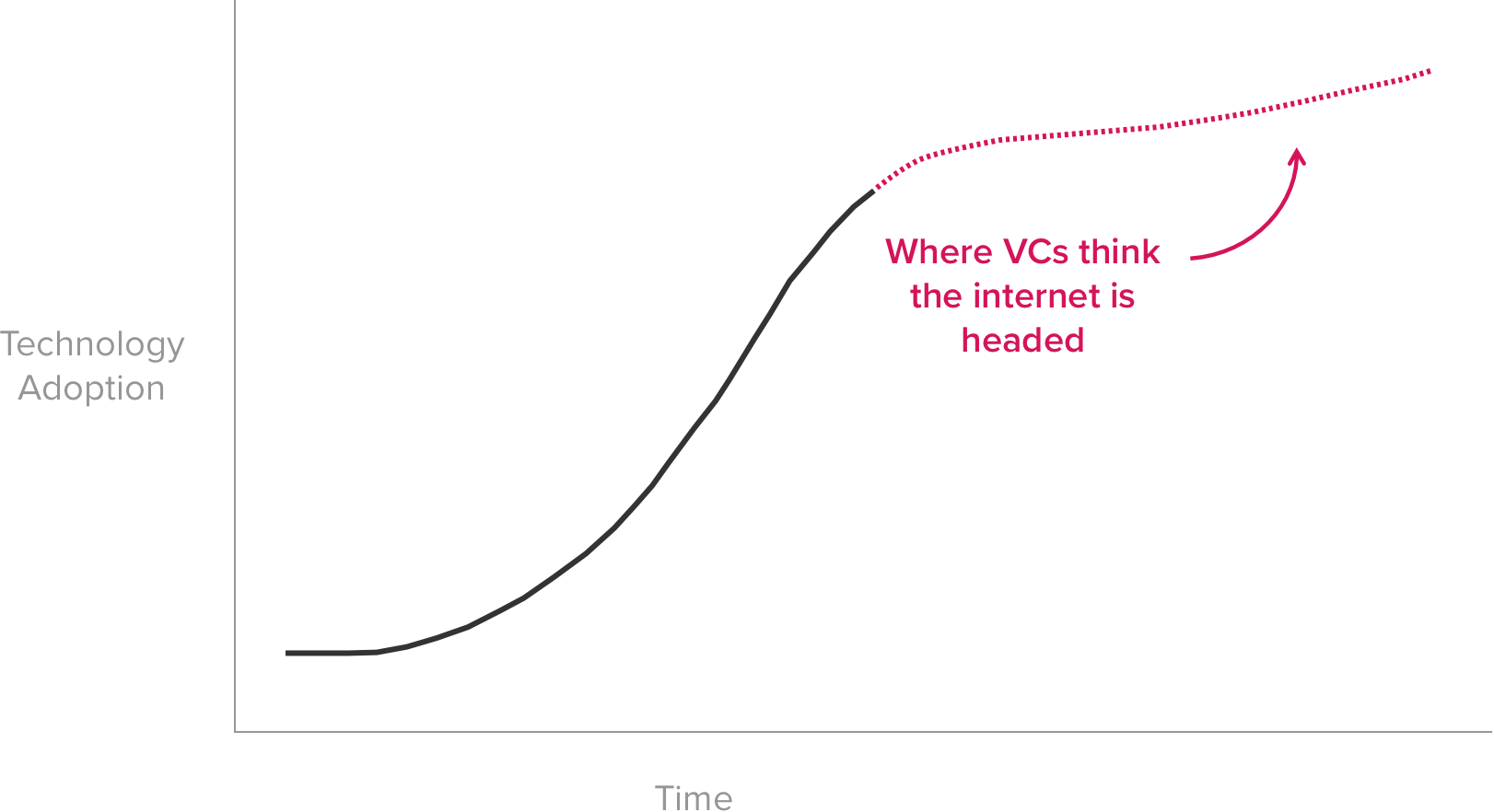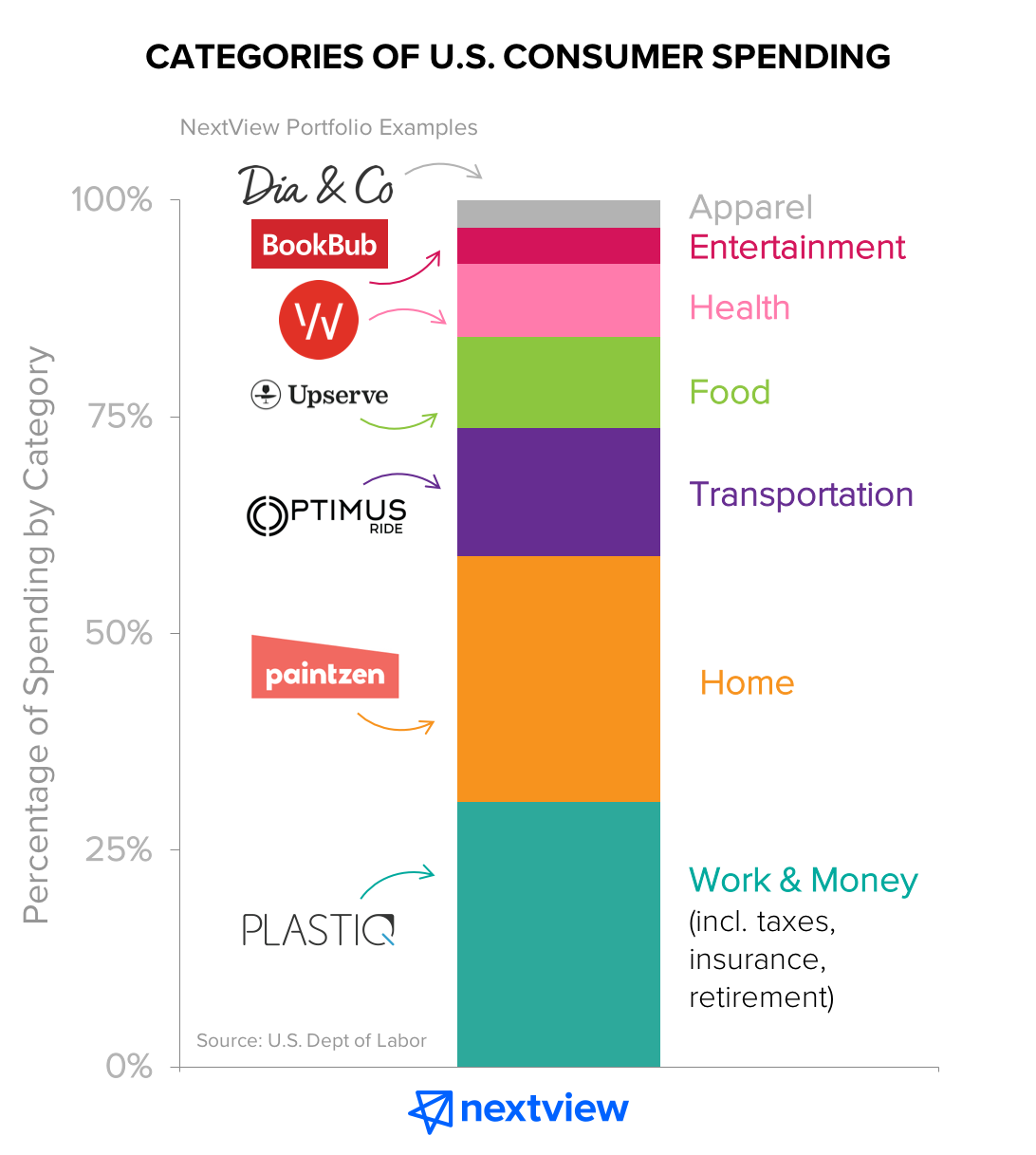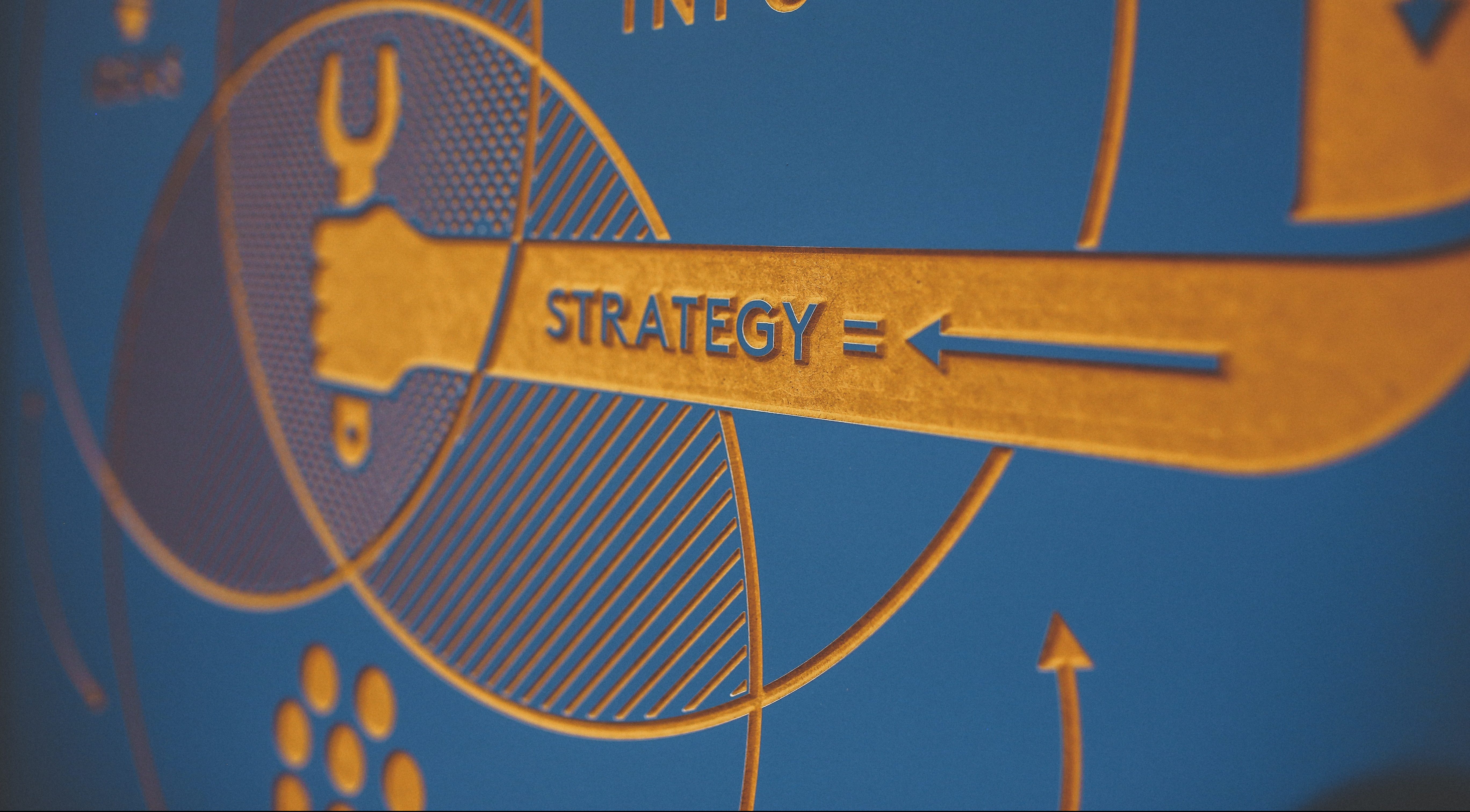


Introducing NextView III and Our Focus on the Everyday Economy
What will the future hold?
It’s a question every VC asks themselves and the entrepreneurs they invest in. Some conclude that certain sectors or technologies — like AI, blockchain, VR — will define the next decade. Others take bets on certain verticals or business models, such as marketplaces, SaaS, or enterprise technology.
At NextView, we think the best way to divine the future is to see it in the context of the longer arc of time. The impact of civilization-shaping technologies unfolds over many decades. Unlike some investors who believe we are in a moment of uncertainty about what comes next, we believe that a long and prosperous era is already here.
For this reason, we’re excited to announce that we have closed on NextView’s $50M third fund, with a mission to champion founders who are redesigning the Everyday Economy.
This post is meant to be a primer on the concept of the Everyday Economy — how it came to be, what it is, and how it will guide our investment philosophy for NextView III and beyond.
Let’s start by going back in time.
The Second-Order Effects of Supertechnologies
Internet-connected computing is an innovation wave on par with a few historical developments of the 18th, 19th, and 20th centuries. Industrial manufacturing, railroads, electricity, and the automobile were all innovations that reshaped society massively.
But in many respects, these didn’t follow “normal” technology innovation waves.
Most innovation waves follow a pattern where infrastructure is initially developed, then enabling technologies are created, and finally applications are built on top of the first two. When one wave starts to crest, VCs try to identify the next one. For example, in computing platforms, the mainframe was superseded by the minicomputer, which was eclipsed by the PC, which was subsumed by client-server platforms, which in many ways has been replaced by cloud and mobile computing.

Conventional wisdom has it that the internet is towards the end of this cycle — and many VCs are on the hunt for the next platform, whether it be blockchain, or AI, or synthetic biology, or what have you.

This view assumes that the internet follows a normal innovation wave — but it doesn’t.
Truly civilization-shaping innovations like the automobile or electricity — let’s call these “supertechnologies” — follow a different and much grander pattern that unfolds over a longer period of time. What comes first is the metaphorical (and literal) laying of the train tracks. Then comes the second-order effects that the “supertechnology” enables for broader society, which typically unfolds over 50+ years.
This can be applied to any of the previously discussed waves:
- Initially, electricity was simply a way to power light bulbs in the late 19th century. It wasn’t until the early 20th-century that electricity reshaped industrial processes, home automation (electric appliances), and even architecture (electric elevators enabled taller buildings).
- The modern meat industry arose 30-40 years after the advent of the railroads that enabled it.
- Suburban housing, drive-in restaurants and cinemas, and shopping malls, which emerged in the U.S. after WWII, were all a direct result of the mass market adoption of the automobile many decades earlier.
Internet-connected computing as we know it is a bit over two decades old at this point. Most of this initial period has been focused on the build-out of core infrastructure: ubiquitous broadband (Cisco, Qualcomm), information search (Yahoo, AOL), mobile & cloud computing (Apple, Samsung, AWS), and the social mesh (Facebook) laid on top.
Innovation in search, social, broadband, and mobile & cloud hasn’t come to an end. But now that the “railroad tracks” of internet computing have been laid, the most exciting companies of the coming decades are using this infrastructure to address the problems people encounter every single day — what we call the Everyday Economy.

You’ve already seen the early glimpses of this. Just look at Uber and Lyft. Rather than developing novel technology platforms, they built on top of existing technology to transform the taxi industry. Without the smartphone and real-time location-based services, these companies wouldn’t be possible.
Uber and Lyft are just the beginning — the transformation of the Everyday Economy is imminent. Here are a few areas of our lives that will be impacted the most.
What Is the Everyday Economy?
There are a finite set of things that nearly all of us experience every day.
As individuals, the things we do and the purchases we make account for 70% of U.S. GDP. This activity is clustered in a handful of areas: home, transportation, food, work & money, health, apparel, and entertainment. Each of these categories represents a market opportunity in excess of $1 trillion, and each of them is ripe for disruption by digital technologies.

The digital transformation of the Everyday Economy isn’t solely limited to how we learn about or shop for products and services — it’s now fundamentally changing how we experience them.
Managed marketplaces, robotics, and on-demand delivery networks are changing how we experience the simple pleasure of eating a meal. Other companies are rethinking our concept of home and lodging. The physical office hasn’t been rendered obsolete by any means, but IP video conferencing has fundamentally changed how and with whom many people work on a daily basis. Uber and Lyft aren’t simply making it easier to hail a taxi — these services, along with the advent of autonomous vehicle technology, are reshaping the entire notion of car ownership and personal mobility.
The internet has transitioned from just simplifying the marketing funnel to redefining the actual products and services we consume.
While our lens on the Everyday Economy is focused on our actions as individuals, it’s not constrained to B2C companies. There are countless B2B startups that are enabling this digital transformation and how consumers experience the Everyday Economy. For example, Upserve, a NextView portfolio company, is an all-in-one tech platform (POS, payments, CRM/loyalty, BI) to help restaurants better serve their customers. Consumers don’t experience Upserve’s product directly, but it is nonetheless shaping their everyday experience of dining at their favorite restaurants.
Interested in reading more about Everyday Economy? Here are a few posts we’ve written that go a level deeper on our new thesis:
Deeper dives in each of the verticals:
- Home
- Food
- Work & Money
- Entertainment
- Apparel
- Why the Everyday Economy Isn’t a Vertical Strategy
- Why Investing in the Everyday Economy Isn’t Just a Consumer Strategy
How We Plan to Invest in the Everyday Economy
In some respects, our thematic focus on the Everyday Economy and its digital transformation isn’t particularly new. Over the last several years, we have been investing in founders seeking to reshape many aspects of our daily lives:
- In food, MealPal is delivering jaw-dropping value for urban workers’ daily lunch plans, and Upserve, as we mentioned earlier, helps restaurants delight their customers.
- In apparel, companies like Dia&Co and ThredUp haven’t just made shopping easier, they’ve changed access to apparel and what people actually wear each day.
- In transportation, Optimus Ride is looking to reshape how people get around.
- In home, Grove Collaborative makes it easier to craft a healthy, beautiful home environment. And Renoviso and Paintzen are changing how people improve and maintain their residences.
There are a few common lenses through which we are thinking about these companies and others that we are looking to invest in.
First, are the founders looking to redesign or just improve a current solution? Improvement is linear and incremental. Redesigns look more like step-function shifts, requiring founders to approach problems very differently. Sometimes, it isn’t obvious from the start that the company will lead to a redesign, but it’s very much part of the company’s Golazo.
Second, we get excited about companies that are redesigning the everyday. We think of this as products that are highly habitual, or that consumers interact with on a daily basis. Sunrise, a calendar app we invested in from our first fund, was used every single day by millions of consumers prior to their acquisition by Microsoft. Slack and Dropbox are used every single day by their business customers. And companies like Casper or Renoviso enable purchases that may not happen very often, but are products that you will interact with every single day in your home.
Third, we look for companies that we think are relevant to everyday people. This means something a little different depending on whether you are talking about consumer businesses or B2B products, but our belief is that the biggest and most impactful companies will need to be ones that redesign the lives of mass consumers or large populations of business users. It’s not surprising that the biggest ecommerce companies of the last few years — Wayfair, Chewy, Dollar Shave Club, and Jet — were all mass market focused businesses, not ones targeting niche or luxury consumers.
That said, we realize that the starting point for companies at the seed stage may be much narrower than a company’s ultimate ambitions. Tesla is the classic example, as the company started with a high-end roadster as the first step towards ubiquitous electric mobility. This is why more than a thesis or investment lens, we are founder-driven in our decisions and our purpose as a firm.
We’re Excited for What’s Next
We can’t wait to invest NextView’s third fund in founders transforming daily living for everyday people, and continue to support the important work our portfolio companies have built over the last seven years.
While much of this post has been about how we are seeing the world differently, most things that we are doing will be very much the same.
We will still strive to help founders by being high-conviction, hands-on investors that drive to decisions, lead rounds, and actively engage with our portfolio companies.
We will still invest in seed and pre-seed rounds of companies before they have meaningful traction, regardless of whether they are raising a few hundred thousand or several million dollars. Early-stage investing is still the only thing we do.
And we will still expand our platform of resources to help seed-stage startups on their audacious mission to redesign the Everyday Economy.
If you’re an entrepreneur on this sort of mission, please get in touch. We look forward to helping you make your dent on our world.





